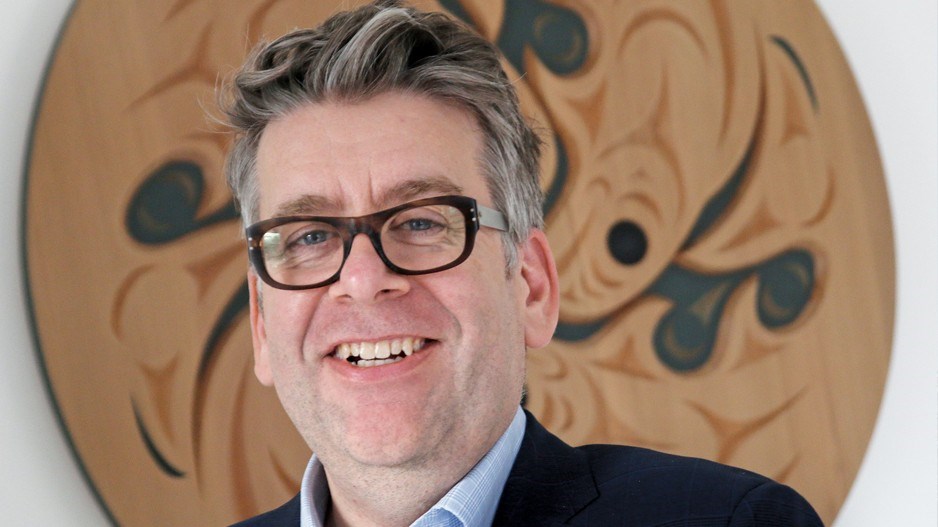It has scaled down its plan for a new location, but the Vancouver Art Gallery (VAG) remains committed to the expansion that it has been pursuing for more than a dozen years.
“We’ve reduced the square footage from 310,000 to 270,000,” new CEO Anthony Kiendl said of the design for a new gallery on the southern two-thirds of the block bounded by Cambie, Dunsmuir, Beatty and West Georgia streets.
“There’s the removal of a level underground,” he said, adding that other design changes include “various cost savings, such as reduction of overall ceiling heights, and efficiencies, like removing a sunken garden.”
He remains optimistic that a new gallery will be built and said that he is in talks with potential private donors as well as government representatives. The smaller proposed gallery may help keep the project within budget.
Fundraising for the project has been at a virtual standstill for the past two years, since Vancouver’s Chan family, headed by Burrard International Holdings founder Caleb Chan, committed $40 million toward the project now estimated to be worth $355 million, including a $50 million endowment fund. That total does not include the City of Vancouver’s gift of a 99-year lease on land that years ago was valued at $100 million.
The Chans’ donation accounts for much of the $87 million in private contributions committed so far. VAG’s budget for the project includes $155 million in private contributions. The other $200 million is set to come from governments.
The only government commitment so far, however, remains the $50 million that former B.C. premier Gordon Campbell’s government pledged in 2008.
Lisa Beare, former B.C. minister of Tourism, Arts and Culture, said in a 2018 email to BIV that the VAG had to do more of its own fundraising before it could count on $50 million in additional provincial money. The province also needs to designate the VAG project a priority in order for it to receive a federal infrastructure funding contribution of $100 million.
That is because the federal government disburses that funding based on provincial priorities.
The provincial government has said it supports VAG’s expansion, but has declined to say whether it is a priority over other projects.
In a statement to BIV, B.C.’s Ministry of Tourism, Arts, Culture and Sport would say only that the province “will continue to engage with the federal government to promote support for this project.”
VAG attendance dropped 16.3%, to 305,421, in the fiscal year that ended June 30, a period that included closure of the gallery between March 15 and June 15.
“Since then, our attendance is hovering around 20% of average,” said Kiendl, who took over as CEO on August 21. “Our membership sales are down by about half – 47%.”
Those metrics have reduced revenue, as has an extended closure of the VAG’s 1931 Gallery Bistro and lower sales at the VAG’s souvenir store.
Some exhibits were cancelled or postponed, while others were extended, Kiendl told BIV.
The gallery has 139 employees. It has laid off 13 people, while five have left through attrition, he said.
The VAG has, however, surged from the No. 11 spot in 2020, to become the largest tourist attraction in B.C. in 2021, ranked by visitors. Some attractions failed to provide data.
Kiendl said travel restrictions and public reticence to travel have fuelled the decline in operations because more than half of VAG's visitors are tourists.
Some other B.C. tourist attractions have been hit harder than has the VAG, because they have closed or reduced operating hours.
The Vancouver Aquarium, for example, closed indefinitely to the public as of September 8.
The Capilano Suspension Bridge Park is operating during the day but closes at 6 p.m., so visitors can’t visit at night to see its light displays.
The tourism ministry’s statement to BIV said that the “provincial government’s focus is on the recovery of the arts and culture sector as a whole. That’s why the government is providing $21 million to support the resilience of the arts and culture sector. This funding will help arts and culture organizations cover operating expenses and rehire people who work in the sector.” •




